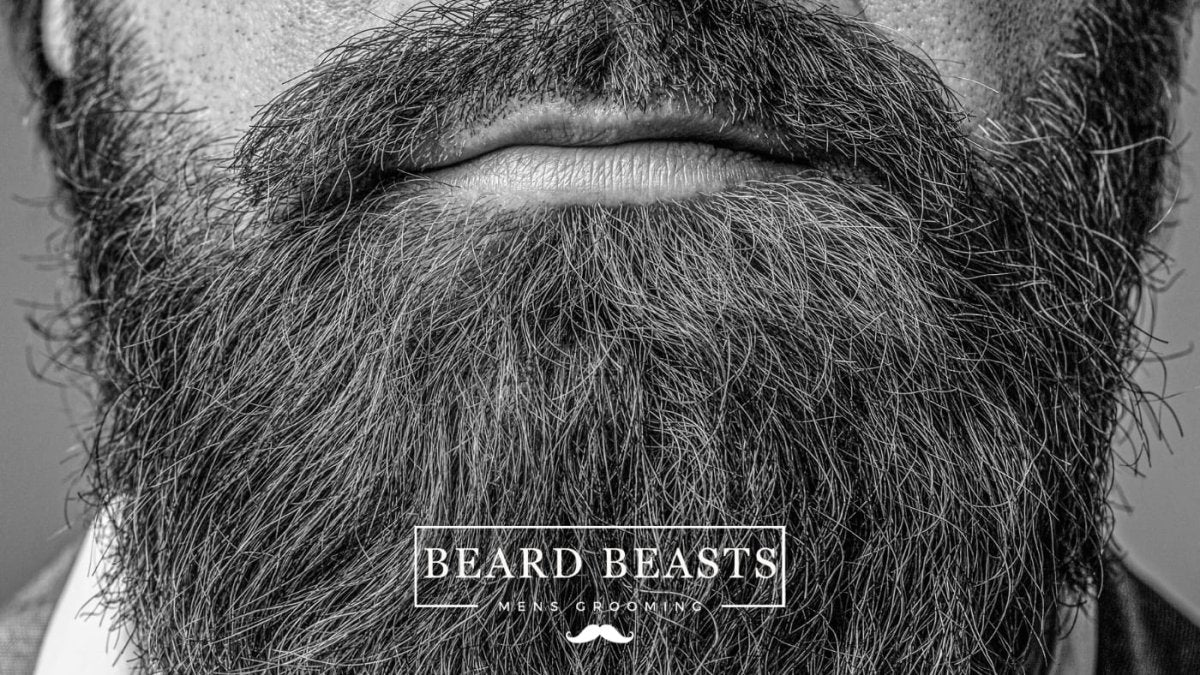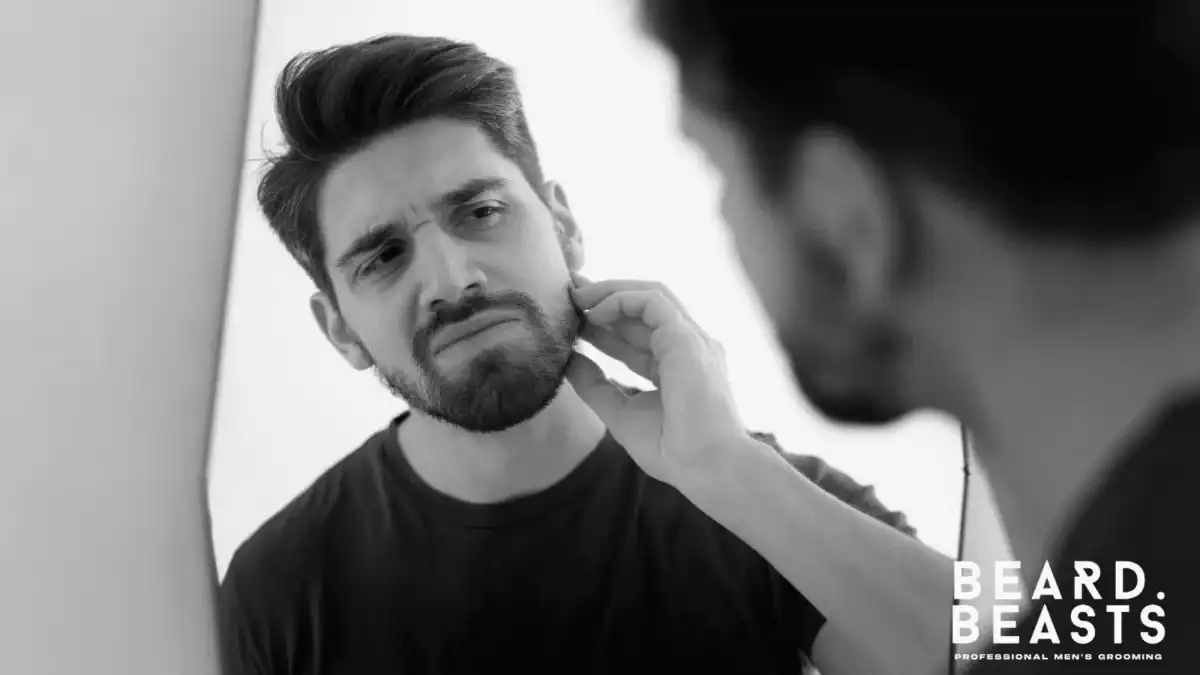Dealing with a rough beard can be a real pain. That scratchy, dry feeling isn’t just uncomfortable; it can also make your facial hair appear unkempt and difficult to style. A variety of factors can contribute to this coarseness, from dehydration and poor grooming habits to environmental conditions and even the quality of your water. If left unaddressed, a rough beard can lead to irritation, persistent itching, and a generally unkempt appearance. But there’s good news! A softer, more manageable beard is entirely within your reach.
This comprehensive guide will explore the common causes of beard roughness and provide you with practical, easy-to-follow solutions to help you achieve the healthy, smooth, and handsome beard you’ve always desired.
What’s Behind a Rough Beard?

An unruly, coarse beard can be incredibly frustrating. It’s not just uncomfortable and itchy; it can also make styling a real challenge and detract from your overall appearance. Understanding the root causes of beard roughness is the first step towards achieving the soft, healthy, and manageable beard you desire.
The Moisture Factor: Hydration is Key
Dryness is a major contributor to a rough, wiry beard. Several factors can lead to this dryness. Harsh environmental conditions, like cold weather and dry air, can deplete your beard’s natural moisture. Even those long, hot showers you enjoy can be surprisingly damaging, stripping away the skin’s natural oils and leaving your beard feeling dry and brittle.
Internal hydration is also crucial. If your body is dehydrated, your beard will show it. Sebum, the natural oil produced by your skin, is essential for beard softness, but over-washing, harsh cleansers, or neglecting to moisturize can disrupt its production.
Grooming Habits: Are You Helping or Hindering?
Your grooming routine can make or break your beard’s health and appearance. Many men unknowingly sabotage their beards by using regular shampoo, which is far too harsh and strips away essential oils. Skipping beard conditioner and beard oil is another common mistake.
Facial hair needs that extra nourishment to stay soft, manageable, and healthy. Washing too frequently can also lead to dryness, while infrequent washing allows dirt, dead skin, and product buildup to accumulate, causing roughness and itchiness. Finding the right balance is essential.
Hard Water: A Hidden Culprit
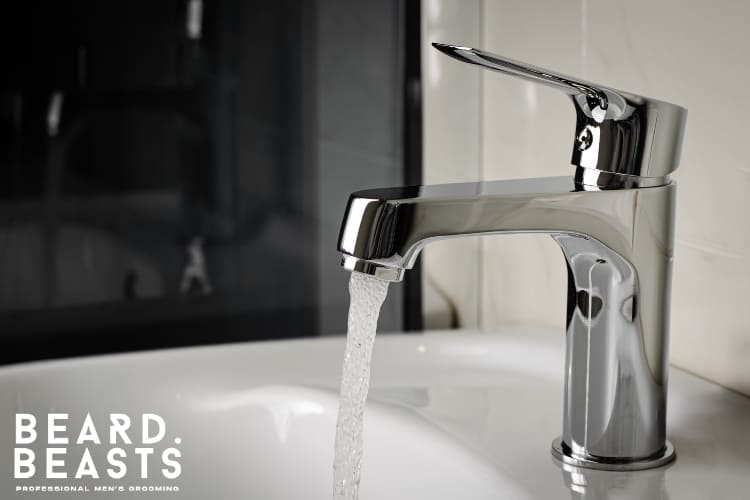
The water you use can significantly impact your beard’s texture. Hard water, laden with minerals like calcium and magnesium, can leave a residue on your beard hair, making it feel stiff, dry, and resistant to even the best beard care products. If your beard seems dull, feels rough despite your efforts, and struggles to absorb oils or conditioners, hard water could be the issue.
Grooming Techniques: The Details Matter
Even with top-notch products, improper grooming techniques can undermine your beard-softening efforts. Using dull razors or trimmers can cause beard split ends and uneven growth, resulting in a wiry texture.
Aggressive brushing or using plastic combs can create friction and lead to breakage. Opt for a quality wooden beard comb or a boar bristle brush to minimize damage and distribute oils evenly. Excessive heat styling with blow dryers or straighteners can also strip moisture, leaving your beard dry and brittle.
Genetics: The Foundation of Your Beard
Genetics play a role in your beard’s inherent texture and thickness. Some men are blessed with naturally softer, finer facial hair, while others have thicker, coarser growth. The shape of your hair follicles and the thickness of individual strands are genetically determined.
Genetics also influence sebum production. While you can’t change your genes, a consistent and proper grooming routine can significantly improve the softness and manageability of your beard, regardless of your genetic predisposition.
A rough beard is rarely caused by a single factor. It’s usually a combination of these elements. Understanding these potential culprits is the crucial first step toward achieving a softer, healthier, and more impressive beard.
How to Tame a Rough Beard: Your Toolkit for Softness
A rough beard can be a source of frustration, but it’s a challenge you can overcome. Transforming your beard into a soft, healthy, and manageable asset is entirely possible with the right approach. Here’s your toolkit for achieving a softer beard:
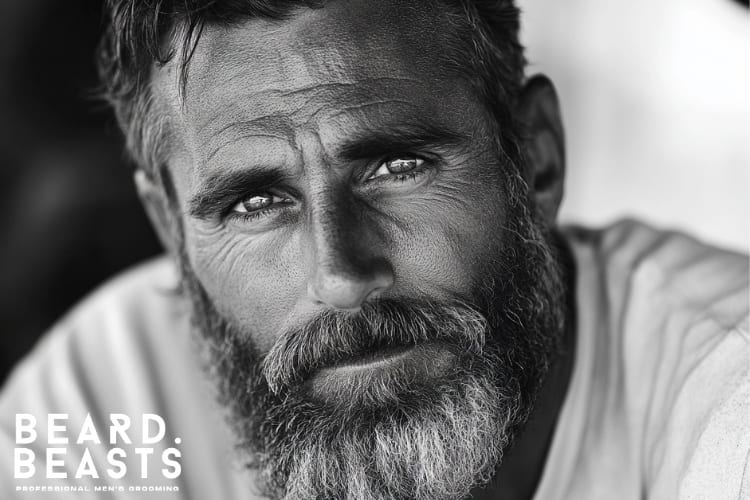
Moisturize and Hydrate: The Foundation of a Soft Beard
Hydration is absolutely essential for a soft, healthy beard. A dry beard is brittle, prone to split ends, and feels rough and uncomfortable. Proper moisture retention is key.
- Beard Oil: This is your go-to product for daily moisture. Beard oil locks in hydration, softens coarse hairs, and prevents that dry, itchy feeling. Look for oils like jojoba, argan, and almond – they mimic your skin’s natural oils and absorb well.
- Beard Balm: For extra conditioning and a bit of styling control, use a beard balm. Balms often contain shea butter and other nourishing oils, providing deeper hydration and a light to medium hold. >Application: For a really rough beard, apply oil twice daily (morning and night). Use balm daily, especially in dry climates.
- Tip: Warm a few drops of oil or a dab of balm in your palms before applying for better absorption and even distribution.
Upgrade Your Beard Care Routine: The Right Products Matter

A consistent and effective routine is crucial for a healthy beard.
- Beard Wash: Ditch the harsh regular shampoo! It’s too harsh for beard hair. Use a gentle beard wash specifically designed for beards. Benefit: A clean, healthy beard without stripping away essential oils.
- Conditioner: Just like the hair on your head, your beard needs conditioning. A good beard conditioner softens the hairs, reduces friction, and helps prevent tangles. Benefit: A more manageable and less knotty beard.
- Washing: Washing 2-3 times a week is usually enough. Over-washing can dry out your beard.
- Essential: Always apply beard oil after washing to replenish moisture.
Combat Hard Water Effects: Softening Your Water, Softening Your Beard
Hard water minerals can leave a residue on your beard, making it feel stiff, rough, and unmanageable.
- Shower Filter: A shower filter can remove these minerals from your water. Benefit: A noticeably softer and healthier beard.
- ACV Rinse: A weekly apple cider vinegar rinse can help break down mineral deposits. Benefit: A natural and effective solution for hard water issues.
- Filtered Water: If you don’t have a shower filter, try rinsing your beard with filtered or bottled water after showering.
- Clarifying Wash: Use a clarifying beard wash occasionally, especially if you live in an area with very hard water.
Proper Beard Grooming Techniques: Mastering the Art of Beard Care
How you groom your beard makes a significant difference in its texture and overall appearance.
- Wooden Comb: Ditch the plastic comb! A wooden beard comb distributes oils evenly and prevents static and breakage. Benefit: A healthier, less frizzy, and more manageable beard.
- Trim Split Ends: Regularly trim split ends (every 4-6 weeks) to prevent further damage and keep your beard looking its best. Benefit: Promotes healthy growth and prevents the beard from looking scraggly.
- Gentle Drying: Pat your beard dry gently with a towel or, even better, let it air dry. Avoid rubbing, which can cause frizz and damage.
- Heat Styling: If you use heat styling tools, use them on low heat and apply beard oil or a heat protectant spray first.
Diet and Lifestyle: Nourishing Your Beard from Within
A healthy, soft beard starts from the inside out.
- Nutrient-Rich Foods: Eat a balanced diet rich in biotin, omega-3s, and protein. Benefit: Supports healthy beard growth and overall beard health.
- Hydration: Drink plenty of water (around 2 liters a day).
- Stress/Sleep: Manage stress and get enough sleep. These factors can affect hair health.
- Supplements: Consider a beard-friendly supplement with biotin and omega-3s.
Transforming a rough beard takes time and effort, but the results are well worth it. Start implementing these strategies today, and embark on the journey to a softer, more impressive beard.
Maintaining a Soft Beard: Long-Term Strategies
Congratulations! You’ve achieved a softer, healthier beard. Now, the key is maintaining that luxurious mane. This section focuses on long-term strategies and adjustments to keep your beard looking and feeling its best, preventing the return of roughness and ensuring your beard remains a source of pride.
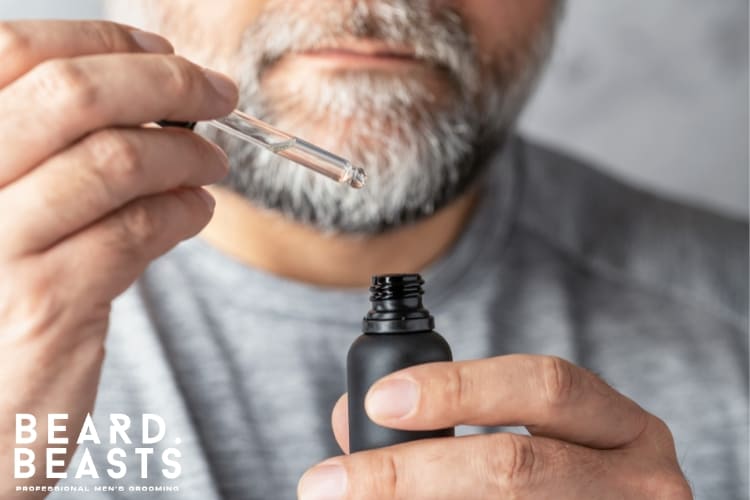
Consistency is King (and Queen)
The foundation of long-term beard health is consistency. While the specific products and techniques we discussed earlier are important, regularity is paramount. A sporadic approach won’t cut it. Make beard care a consistent part of your daily routine, just like brushing your teeth or showering.
Refine and Adapt Your Routine
Your beard is a dynamic entity, constantly changing and evolving. Be prepared to adapt your routine as your beard changes. What worked initially might need tweaking over time. Pay close attention to your beard’s specific needs:
- Listen to Your Beard: Is it feeling drier than usual? Increase oil or balm application. Is it getting oily faster? Adjust your washing frequency. Don’t be afraid to experiment to find what works best for your beard at its current stage.
- Product Rotation: Consider rotating between different beard oils and balms. This can help prevent your beard from becoming “acclimated” to a particular product and ensure it’s receiving a variety of nutrients.
- Professional Guidance: Don’t hesitate to consult a barber or beard care specialist. They can offer personalized advice and recommend products tailored to your unique beard type and needs.
Long-Term Health and Wellness
Your beard’s health is inextricably linked to your overall health. These long-term lifestyle factors play a crucial role:
- Diet: A balanced diet rich in vitamins, minerals, and protein is essential for healthy hair growth. Focus on long-term nutritional habits, not just short-term fixes.
- Hydration: Consistent, adequate hydration is essential, not just for your beard but for your entire body.
- Stress Management: Chronic stress can negatively impact hair health. Find healthy ways to manage stress long-term, such as exercise, meditation, or spending time in nature.
- Sleep: Quality sleep is crucial for cell regeneration and hair growth. Aim for 7-9 hours of restful sleep each night.
Seasonal Adjustments: A Year-Round Approach
We touched on seasonal adjustments before, but it’s important to view this as a year-round strategy. Don’t just switch up your routine for a few weeks; adapt it continuously to the changing seasons.
- Anticipate Changes: Be proactive. As the weather changes, anticipate how it might affect your beard and adjust your routine before problems arise.
- Experiment: Different products and techniques might be better suited for different seasons. Don’t be afraid to experiment to find what works best for your beard in each season.
Maintaining a soft, healthy beard is a marathon, not a sprint. By focusing on consistency, adapting your routine, prioritizing long-term health, and anticipating seasonal changes, you can keep your beard looking and feeling its best for years to come.
Frequently Asked Questions (FAQs)
Still have questions about taming your rough beard? Here are answers to some common queries:
I’m using beard oil, but my beard still feels rough. Why?
A few things might be happening. First, make sure the oil is absorbing properly. Applying it to slightly damp hair can help. You might also need a richer oil, like argan or jojoba, if your beard is naturally coarse. Split ends, hard water buildup, or excessive dryness can also contribute. Consider adding a beard balm for extra conditioning, and ensure you’re following the other grooming tips in this guide.
How long will it take to see results?
With consistent care, you might notice a slight improvement within days if the dryness is mild. More noticeable changes usually take 2-4 weeks of regular oil, conditioner, and proper grooming. Severely dry or damaged beards might take a few months with consistent care, trims, and deep conditioning.
Can I soften a naturally coarse beard?
Absolutely! Even the coarsest beards can be softened with the right routine. Hydration is key. Use beard oil and balm regularly, and consider a deep conditioner. Trimming split ends and using a quality comb or brush also helps. Genetics play a role, but proper care makes a huge difference.
What are the best products for softening?
Your core toolkit includes a good beard oil (argan, jojoba, or almond oil are excellent choices), a beard balm for extra hydration and hold, and a beard conditioner. Beard butter can provide deep conditioning. Don’t forget a microfiber towel for gentle drying!
Will shaving make my beard softer?
Shaving just removes the current rough hair; it doesn’t change the texture of new growth. Roughness is caused by dryness, genetics, and grooming habits, not shaving frequency. Focus on hydration, conditioning, and proper grooming techniques for a softer, healthier beard.
Conclusion: From Rough Beard to Refined Softness
A rough beard can be incredibly frustrating, but it doesn’t have to be your reality. By understanding the causes—dryness, poor grooming habits, hard water, and genetics—you can take control of your beard’s destiny. Prioritize hydration, proper beard care, and consistent maintenance to transform your beard from coarse and brittle to smooth, manageable, and truly impressive.
A reliable grooming routine is essential for long-term beard health. Using a beard-specific shampoo, applying beard oil and balm daily, and avoiding common mistakes like overwashing and aggressive drying will help maintain moisture and prevent roughness. Adapt your routine to suit seasonal changes, ensuring your beard stays soft and healthy year-round. Regular trims and quality grooming tools will keep your beard looking and feeling its best.
If your beard still feels rough, don’t give up! Reassess your routine and make adjustments as needed. A combination of proper grooming techniques, high-quality beard care products, and healthy lifestyle habits will lead to noticeable and lasting improvements. Follow this guide, and you’ll be well on your way to achieving the soft, manageable, and healthy beard you deserve.

